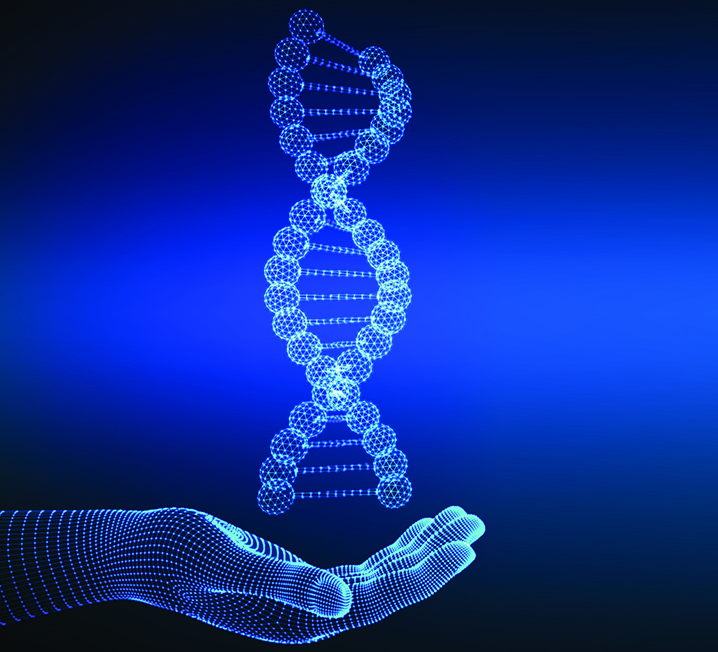 The AuraSeq-Solid Tumor panel, a highly multiplexed assay based on an NGS platform, allows the identification of drug targets in different genes simultaneously, assisting physicians in selecting personalized therapies .
The AuraSeq-Solid Tumor panel, a highly multiplexed assay based on an NGS platform, allows the identification of drug targets in different genes simultaneously, assisting physicians in selecting personalized therapies .
Reference: Kris MG, Johnson BE, Berry LD, et al. Using multiplexed assays of oncogenic drivers in lung cancers to select targeted drugs. JAMA. 2014;311(19):1998-2006.
TEST DESCRIPTION
- The AuraSeq-Solid Tumor panel is used to detect cancer-related single nucleotide variants and other mutations such as insertions and deletions across 50 genes using Next-Generation Sequencing (NGS) technology in colorectal, lung, thyroid, melanomas and other solid tumors.
- AuraSeq provides an informative genomic profile helping health care providers to make diagnosis of cancer, estimate prognosis, and make treatment decisions for patients that carry mutations associated with response or resistance to molecular targeted drugs 1.
- The test results allow oncologists to better match patients with available targeted therapies and applicable clinical trials options 2,3,4.
- As more molecularly targeted therapies become available in clinical practice, detection of targetable gene variants is increasingly important in order to drive therapy of choice. The current single-agent: single-gene approach is rapidly becoming obsolete for the treatment of many cancers, since resistance often develops rapidly through complex mechanisms among various cancer types. Combinatorial therapy is rapidly evolving to target multiple points along the involved signaling pathways simultaneously or in sequence, depending on how well genomic alterations in cancers are identified and the dynamic signaling network response to various target gene inhibitors are understood. The use of a multiplexed assay, such as the AuraSeq- Solid Tumor panel, allows the identification of drug targets in multiple genes simultaneously 5.
Test Methology
Next Generation Sequencing
Test Performance
- 100% (95%CI 95.1%-100.0%) sensitivity & 100% (95%CI 67.6%-100.0%) specificity.
- The limit of detection (LoD) is 3% of mutant DNA in total DNA, at a mean coverage of 2000X and a minimum coverage of 200X, or 8% at a minimum coverage of 100X.
The AuraSeq- Solid Tumor panel utilizes Next Generation Sequencing to survey hotspot regions of 50 oncogenes and tumor suppressor genes.

This test is designed to amplify 207 amplicons covering over 2800 COSMIC mutations in the genes listed below:
| ABL1 | AKT1 | ALK | APC |
| ATM | BRAF | CDH1 | CDKN2A |
| CSF1R | CTNNB1 | EGFR | ERBB2 |
| EGFR | RAF1 | ERBB2 | ERG |
| ERBB4 | EZH2 | FBXW7 | FGFR1 |
| FGFR3 | FLT3 | GNA11 | GNAS |
| GNAQ | HNF1A | HRAS | IDH1 |
| JAK2 | JAK3 | IDH2 | KDR |
| KIT | KRAS | MET | MLH1 |
| MPL | NOTCH1 | NPM1 | NRAS |
| PDGFRA | PIK3CA | PTEN | PTPN11 |
| RB1 | RET | SMAD4 | SMARCB1 |
| SMO | SRC | STK11 | TP53 |
| VHL |
References:
1. Herbst RS, Kies MS. Gefitinib: current and future status in cancer therapy. Clin Adv Hematol Oncol. 2003;1(8):466-72.
2. Pao, W. Acquired resistance of lung adenocarcinomas to gefitinib or erlotinib is associated with a second mutation in the EGFR kinase domain. PLoS Med. 2005;2(3):e73.
3. Dumur CI, Idowu MO, Powers CN. Targeting tyrosine kinases in cancer: the converging roles of cytopathology and molecular pathology in the era of genomic medicine. Cancer Cytopathol. 2013;121(2):61-71.
4. Sahin O, Wang Q, Brady SW, Ellis K, Wang H, Chang CC, Zhang Q, Priya P, Zhu R, Wong ST, Landis MD, Muller WJ, Esteva FJ, Chang J, Yu D. Biomarker-guided sequential targeted therapies to overcome therapy resistance in rapidly evolving highly aggressive mammary tumors. Cell Res. 2014;24(5):542-59.
5. Dumur CI, Almenara JA, Powers CN, Ferreira-Gonzalez A. Quality control material for the detection of somatic mutations in fixed clinical specimens by next-generation sequencing. Diagn Pathol. 2015;10:169.
TEST ORDERING
Test Reporting
- Variants are reported using a tier system as defined by a joint consensus recommendation of the Association for Molecular Pathology, American Society of Clinical Oncology, and College of American Pathologists (6) to report somatic variants.
- Tier I: Variants of Strong Clinical Significance (therapeutic, prognostic & diagnostic) with Level A (FDA approved therapies, and included in professional guidelines) or Level B (well-powered studies with consensus from experts in the field, including potential germline pathogenic variants associated with cancer predisposition) evidence.
- Tier II: Variants of Potential Clinical Significance (therapeutic, prognostic & diagnostic) with Level C (FDA approved therapies for different tumor types or investigational therapies, and/or included in multiple small published studies with some consensus) or Level D (pre-clinic trials or a few case reports without consensus) evidence.
- Tier III: Variants of Unknown Clinical Significance, not observed at significant allele frequency in the general or specific subpopulation databases.
- Tier IV: Benign or likely Benign, observed at significant allele frequency in the general or specific subpopulation databases and no existing published evidence of cancer association. These variants are not reported.


